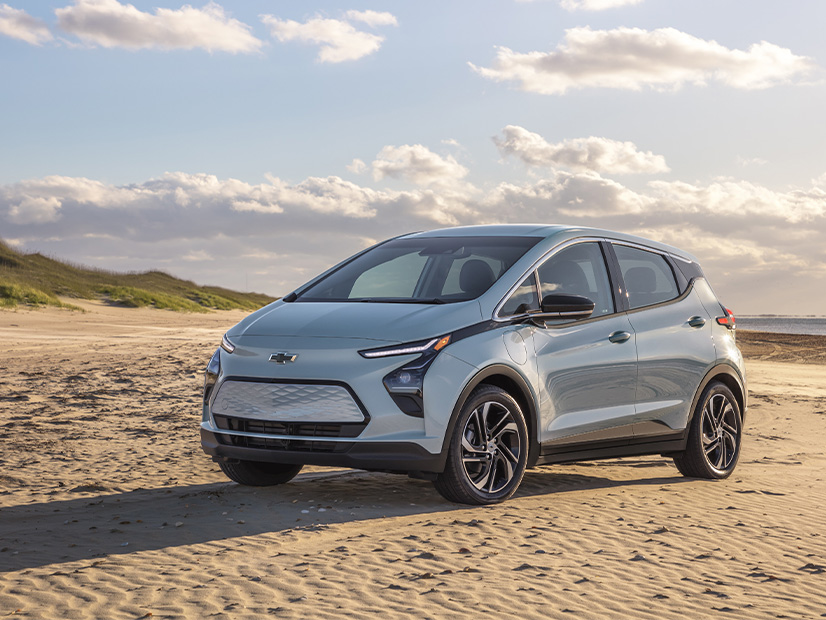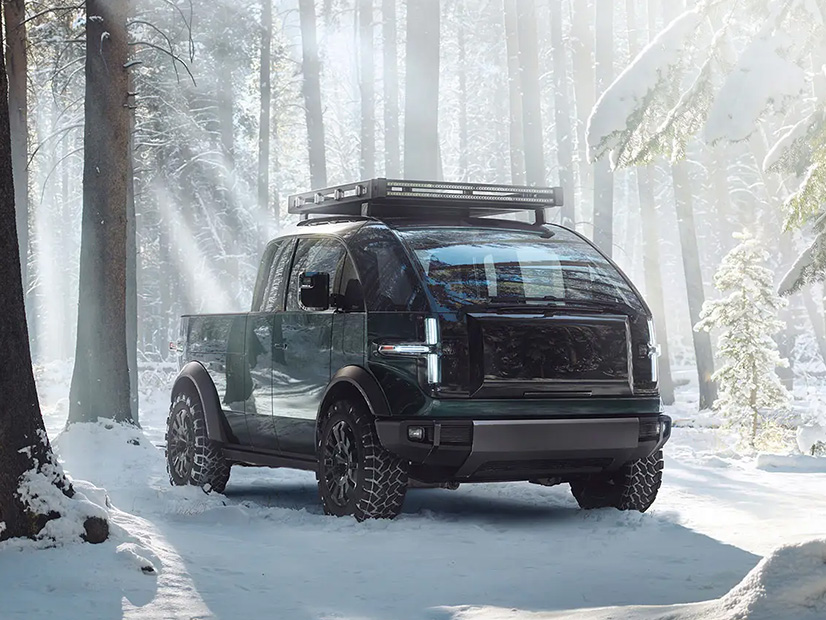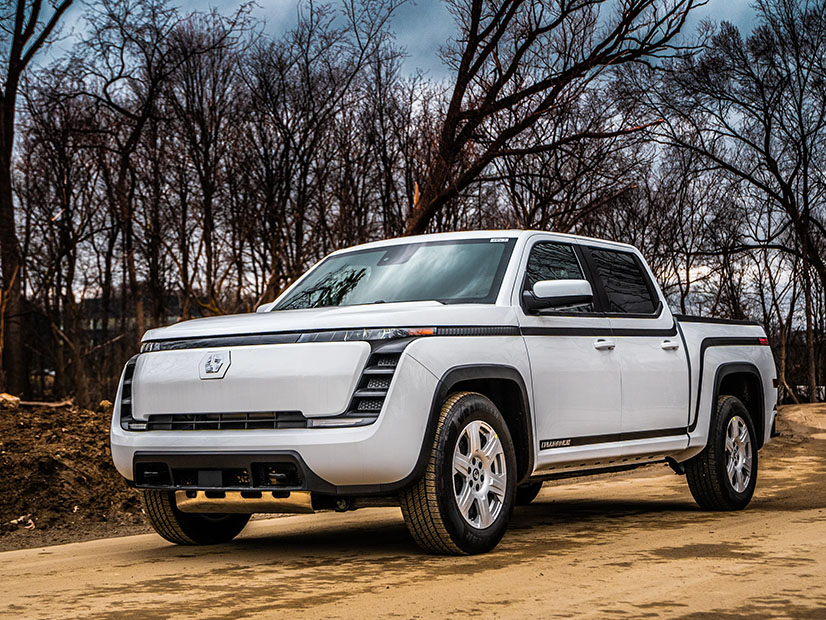Ohio-based Lordstown Motors (NASDAQ:RIDE) said it will begin manufacturing its light-duty electric truck model, the Endurance, in the next six to eight weeks, with deliveries to commercial customers in the fourth quarter. Sales to the public are expected later.
The company affirmed the start-of-production target during its second-quarter earnings call Aug. 4. It had announced last November that it would push back production to the third quarter of this year, citing supply chain problems.
Last week’s announcement was just the latest twist in a long road to manufacturing and profitability for the startup, putting the company in the lead of a small parade of entrepreneurial groups struggling to engineer and manufacture novel electric vehicle models, while the behemoth, “legacy” carmakers prepare to mass produce their own models.
General Motors (NYSE:GM), for example, announced in June that it was slashing the sticker price of its Chevy Bolt by $6,000 to a starting price of $25,600. That price cut, which made the Bolt the least costly EV, came before the latest effort by Congress to pass legislation addressing climate change.

The Inflation Reduction Act, approved by the Senate on Sunday and in line for approval by the House of Representatives this week, would renew the current $7,500 tax credit for the purchase of a new EV but without the limit on the number of vehicles sold. It would also be available at the point of sale rather than in the consumer’s next tax filing.
The credit runs through the end of 2032. The legislation would require that the vehicle be made in the U.S. and that materials in the battery must come from the U.S. or countries with which the U.S. has free-trade agreements. But those provisions would not fully kick-in until 2024.
In addition to announcing that production is on-track, Lordstown last week reported an operating profit of $61.2 million, largely because the company completed the sale of its 6.2 million square-foot production facility, a former GM assembly plant, to Foxconn for $230 million. The company is still looking for more capital.
The sale of the plant is at the center of a joint venture with Foxconn, making Lordstown the Taiwanese company’s “primary development partner in North America,” according to Lordstown.
“I am excited by my expanded role as CEO of Lordstown and the joint venture with Foxconn,” said Edward Hightower, who took over leadership of the company July 12. “In Q2, we made significant progress towards our plan to launch the Endurance in Q3 of 2022 and begin sales in Q4.
“We look forward to getting the Endurance into customers’ hands, as we think they are going to love it. We have also started pre-development work on the first vehicle under our joint venture. Our team is excited to create and launch future products while leveraging the Foxconn EV ecosystem.”
Fisker
A future competitor to Lordstown, Fisker (NYSE:FSR) also reported second-quarter results last week. The company announced it has contracted with Foxconn to build an electric SUV it will call the PEAR at the former Lordstown plant beginning in 2024. The price will begin at just below $30,000. The company expects the car to qualify for the federal tax credit.
The company plans to build a minimum of 250,000 Pears and has already received 4,000 requests for reservations.

Fisker has also logged 5,000 reservations for its first vehicle, the Ocean, a larger, luxury SUV that is also not yet in production. The company said it expects to begin producing the car with a contract manufacturer in November at a plant in Europe. Consumers paid a $5,000, nonrefundable deposit to make the reservations.
CEO Henrik Fisker, a Danish-American auto designer based in Los Angeles, said the company has built 55 prototypes of the Ocean and that crash tests of some of the vehicles indicate it will achieve a five-star rating, the highest possible, next year when the National Highway Traffic Safety Administration conducts its own tests.
Mr. Fisker added that he had driven the car on a high-speed track in Italy, as well as on city streets in Los Angeles.
“I can promise anybody this is going to be one of the best handling SUVs in the world, hands down, specifically when you combine the actual cornering and driving ability and performance compared with comfort,” he said. “It’s easy to make a super sporty car, and it’s easy to make a super comfortable car, but combining the two for everyday use is super difficult, and we have really achieved this.”
Canoo Motors
Canoo Motors (NASDAQ:GOEV), based in Justin, Texas, which defines itself as a technology company first and carmaker second, reported its second-quarter results Monday afternoon, revealing it has already logged more than 10,000 orders.

The company is targeting commercial as well as individual consumers with a “lifestyle vehicle” available in 2023. The company has already built 89 prototype vehicles, some of which have already been used as commercial delivery vehicles, while others have been used in crash testing.
During the analyst call, Ramesh Murthy, chief accounting officer, said Walmart has ordered 5,000 vehicles from the company for use as delivery vehicles. The contract includes an option to buy 10,000 more.
NASA has also awarded Canoo a contract to build an EV for the Artemis program to return humans to the Moon in 2025, and the U.S. Army has selected the company’s EVs for testing in its program to electrify its vehicle fleet.
Canoo reported it spent $115.5 million during the quarter on research and development, Murthy told analysts.
“We have customers; we have access to capital. We have a strategy that benefits our company and shareholders against the backdrop of this global economic condition. We are making it happen,” he said.
Executive Chairman and CEO Tony Aquila said all versions of the vehicle will be built on the same platform, which has only 1,800 parts currently and will have 1,600 parts when commercial production begins.
“Over the past five quarters, we have worked to guide the market to understand our different approach and that we are a technology-first-centric advanced mobility company, and that we understand true total cost of ownership because we come from the service maintenance repair technology side of the industry.”
The company appears to have a “Made in America” focus.
“During the quarter we saw many legacy OEMs struggling with quantity … and their reliance on Chinese-made parts and technologies. … The majority of our focus to date has been on technology and real product validation. Our decision to prioritize domestic manufacturing at the end of last year was the right move.”



